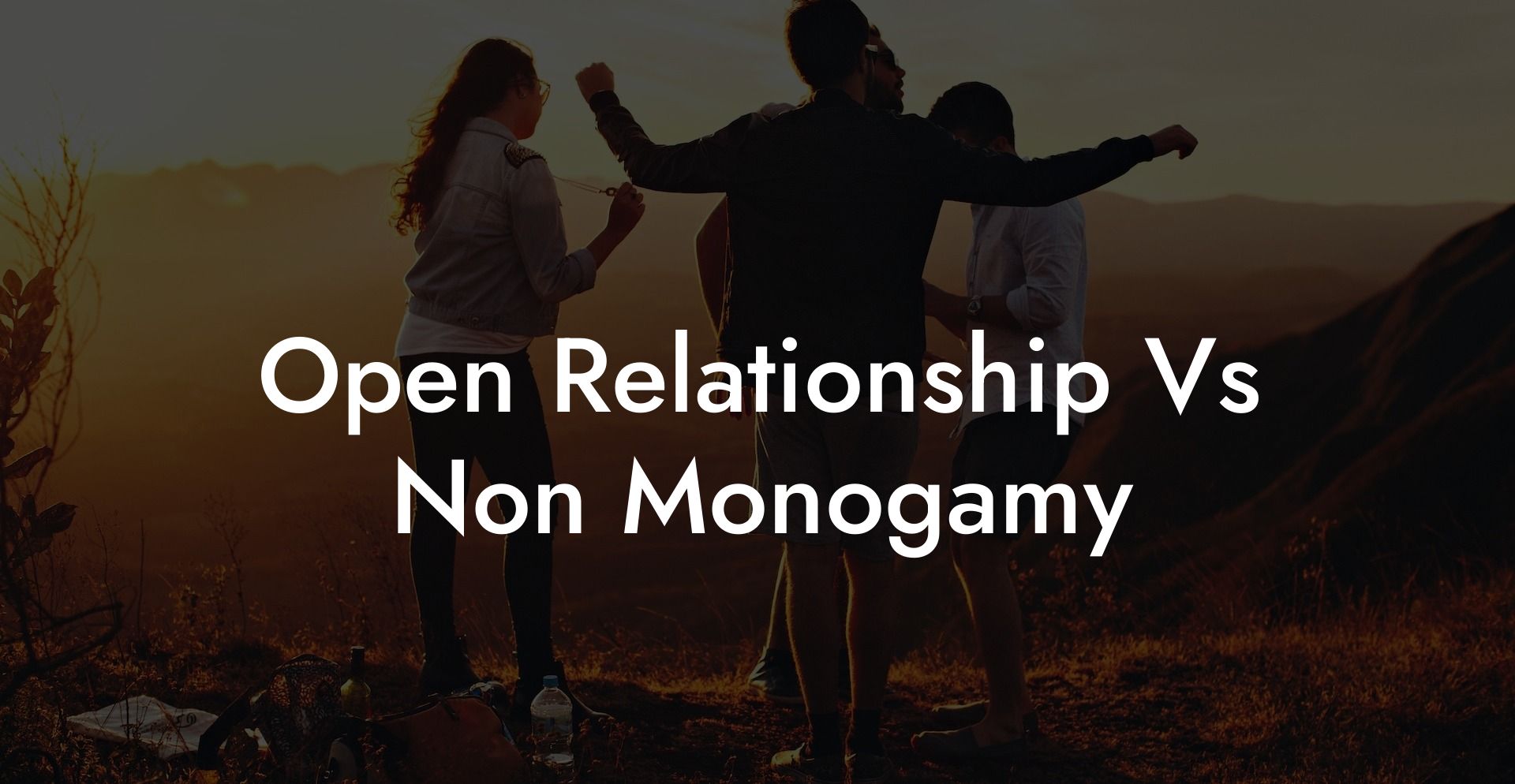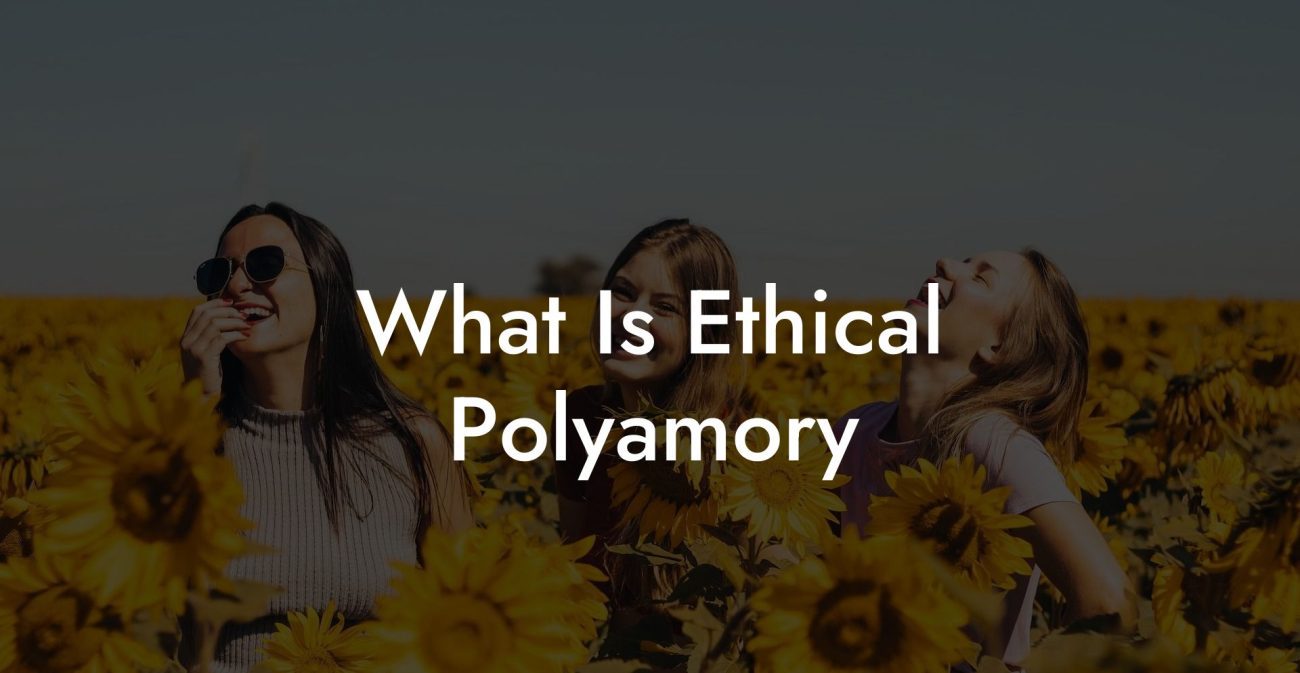Open Relationship vs Monogamy: Key Differences

This guide examines open relationships and monogamy side-by-side, comparing their definitions, commitment levels, communication styles, legal recognition, and emotional dynamics. Whether you are exploring alternative relationship models or seeking to understand how traditional monogamy differs from more flexible arrangements, this resource offers clear insights and practical strategies.
Quick Links to Useful Sections
- Understanding Open Relationships
- Definition and Core Principles
- Understanding Monogamy
- Definition and Core Characteristics
- Key Differences Between Open Relationships and Monogamy
- Commitment and Exclusivity
- Structure and Dynamics
- Communication and Emotional Management
- Legal Recognition and Social Norms
- Flexibility and Personal Freedom
- Practical Considerations
- Self-Reflection and Relationship Goals
- Communication Strategies
- Setting Boundaries
- FAQ: Your Open Relationship vs Monogamy Questions Answered
Understanding Open Relationships
Definition and Core Principles
An open relationship is a consensual arrangement in which a couple agrees that one or both partners can pursue additional romantic or sexual connections outside their primary bond. The core principles of open relationships include:
- Mutual Consent: Every partner is fully informed and agrees to the arrangement.
- Transparent Communication: Ongoing, honest dialogue helps set and adjust boundaries.
- Flexibility: The structure is adaptable, allowing relationships to evolve based on individual needs and circumstances.
- Focus on the Primary Bond: Despite engaging with others, the central relationship remains a priority.
Understanding Monogamy
Definition and Core Characteristics
A monogamous relationship is defined by an exclusive bond between two individuals who commit to being romantically and sexually involved only with each other. Monogamy is widely supported by legal, cultural, and religious norms. Key characteristics include:
- Exclusivity: Partners agree to devote their intimacy solely to each other.
- Long-Term Commitment: Many monogamous relationships aim for lifelong commitment, often formalized through marriage.
- Legal Recognition: Monogamous marriages enjoy legal rights and protections such as inheritance, custody, and spousal benefits.
- Focused Emotional Connection: The exclusivity often fosters a deep, singular emotional bond.
Key Differences Between Open Relationships and Monogamy
Commitment and Exclusivity
Open Relationships: Emphasize a primary bond while allowing for additional connections. The commitment is flexible, with boundaries negotiated to accommodate multiple relationships.
Monogamy: Focuses on exclusivity and a singular, lifelong commitment between two people, where all intimacy is shared only within the couple.
Structure and Dynamics
Open Relationships: Require dynamic communication and ongoing negotiation as partners manage interactions with others. The relationship structure is fluid and adaptable.
Monogamy: Has a simpler structure focused on one primary relationship, which typically leads to a more streamlined dynamic with clear roles and expectations.
Communication and Emotional Management
Open Relationships: Demand robust, multi-directional communication among all involved to manage boundaries, resolve conflicts, and address complex emotions like jealousy.
Monogamy: Involves deep, bilateral communication that centers on the emotional needs and growth of two individuals, making conflict resolution generally more straightforward.
Legal Recognition and Social Norms
Open Relationships: Typically lack formal legal recognition since the legal system is designed around monogamous marriage. This can lead to challenges in areas like property rights and healthcare benefits.
Monogamy: Is widely recognized and supported by legal frameworks, offering couples defined rights, social legitimacy, and cultural acceptance.
Flexibility and Personal Freedom
Open Relationships: Provide greater flexibility, allowing individuals to explore their sexuality and emotional connections with multiple people while still maintaining a primary relationship.
Monogamy: Emphasizes exclusivity, which can provide a focused, secure environment for deep emotional bonding but may limit opportunities for varied personal experiences.
Practical Considerations
Self-Reflection and Relationship Goals
Deciding between an open relationship and a monogamous partnership often comes down to personal values and goals. Ask yourself:
- Do I value exclusivity and a singular emotional focus, or do I desire the freedom to explore multiple connections?
- How do I manage complex emotions such as jealousy?
- What level of legal and social support do I need in a relationship?
Communication Strategies
Regardless of the model, effective communication is key. Develop routines for regular check-ins, use digital tools for scheduling, and consider professional counseling to help manage emotional challenges.
Setting Boundaries
Clearly define your boundaries and expectations early on. Whether in an open relationship or a monogamous partnership, having agreed-upon guidelines can prevent misunderstandings and ensure that all partners feel respected.
FAQ: Your Open Relationship vs Monogamy Questions Answered
1. What is an open relationship?
An open relationship is a consensual arrangement where a couple maintains a primary bond while allowing one or both partners to engage in additional romantic or sexual relationships.
2. What is monogamy?
Monogamy is the practice of being exclusively committed to one partner, with both individuals sharing all aspects of intimacy, love, and, often, legal and social benefits.
3. How do commitment levels differ between the two models?
Open relationships allow for a primary commitment while offering flexibility for additional connections, whereas monogamy requires exclusive, focused commitment to one partner.
4. What are the legal differences between open relationships and monogamous marriages?
Monogamous marriages are legally recognized and come with defined rights and protections. Open relationships, by contrast, typically lack formal legal recognition, which can affect matters such as property rights and spousal benefits.
5. How do the emotional dynamics differ?
Monogamous relationships foster a deep, exclusive emotional bond between two people. Open relationships, while providing diverse emotional support, require more advanced communication skills to manage complex feelings like jealousy.
6. Where can I find more information on these topics?
Additional resources include books like "The Ethical Slut" and "More Than Two", podcasts such as "Multiamory" and "Polyamory Weekly," and online communities like r/polyamory.
Resources and Community Support: Your Next Steps
- "The Ethical Slut" by Dossie Easton & Janet Hardy – A seminal work exploring various models of relationships and providing insights into ethical non-monogamy.
- "More Than Two" by Franklin Veaux & Eve Rickert – An in-depth guide offering practical advice on managing relationship dynamics in both monogamous and open relationship contexts.
- Podcasts: Listen to "Multiamory" and "Polyamory Weekly" for engaging discussions and personal stories about diverse relationship models.
- Online Communities: Join forums such as r/polyamory and other social media groups to exchange ideas and receive support.
- Workshops and Webinars: Attend events focused on relationship psychology and ethical non-monogamy to expand your knowledge and connect with like-minded individuals.
By exploring these resources and applying the strategies outlined in this guide, you can develop a clear and informed understanding of the key differences between open relationships and monogamy. Embrace continuous learning, open communication, and self-reflection as you navigate the diverse landscape of intimacy and commitment.
Lost & confused by all of the terms, types and seemingly made up 3 letter acronyms?? We've got you. Check out our Ethnical Non-Monogamy Dictionary >>
Useful Interruption: Not sure which relationship vibe fits you best? Take our Relationship Test, it’ll give you the real insight into your natural relationship style. Then, dive into our binge-worthy guides (from the tried-and-true to the “wait, that’s a thing?”) and find the perfect relationship type for your life:
- Monogamy
- Open Relationships
- Ethical Non-Monogamy
- Solo Polyamory
- Non-Hierarchical Polyamory
- Hierarchical Polyamory
- Relationship Anarchy
- Swinging
Now back to the main article but yeah take the test...












